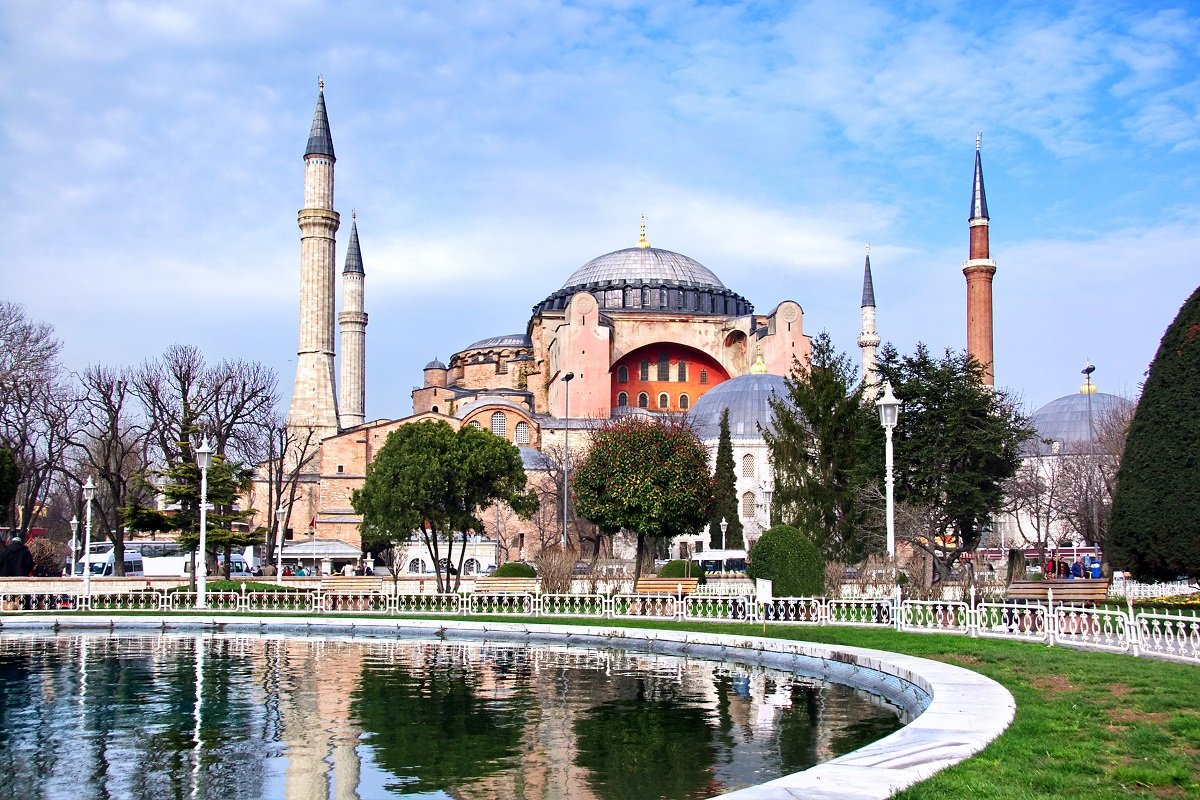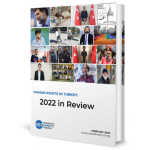The restrictions on religion and social hostilities involving religion increased in 2015 for the first time in three years, according to Pew Research Center’s latest annual study on global restrictions on religion. According to Pew survey, Turkey under the rule of autocratic President Recep Tayyip Erdoğan is also among the countries where restrictions on religion are “very high.” Turkey was listed in the report’s “high” category because of regressions especially in terms of social hostilities involving religion.
In the report, Pew stated that many countries have some form of restriction on religion, whether that involves policies favoring some groups over others or outright bans on certain worship practices. “But each year, a few countries stand out as having particularly extensive restrictions,” the report said.
In 2015, 23 of the 198 countries in the study had “very high” levels of restrictions, up from 16 countries in 2014. Some 13 countries – like China, Egypt, Uzbekistan, Saudi Arabia and Iran – have had very high levels of restrictions every year since 2007, the first year for which data are available.
Other countries may fluctuate into and out of this top category. Eight countries had very high levels of government restrictions in 2015 but not in 2014, which are Vietnam, Singapore, Morocco, Algeria, Iraq, Eritrea, Brunei and Mauritania. Laos was the only country to fall out of this category in 2015. Turkey was in the category in 2014 and still is, but there is a low level of improvement, according to the report.
Pew didn’t rank the countries in the category due to the difficulty of listing them taking the geographical differences into account. The number of countries with “high” levels of restrictions fell somewhat, from 31 countries in 2014 to 27 countries in 2015, although this was mainly due to some countries moving into the “very high” category.
Meanwhile, the number of countries with “low” levels of restrictions decreased from 2014 to 2015, from 92 to 87. Similarly, most countries have some form of social hostilities involving religion, including social groups harassing members of a certain religion, or terrorist groups carrying out actions in the name of religion. “Some countries, however, have particularly extensive social hostilities,” the report said.
Each year, some countries experience significant changes in their scores on the Government Restrictions Index (GRI) without necessarily rising into – or falling out of – the “very high” restrictions category.
Government restrictions on religion and social hostilities involving religion increased in 2015 for the first time in three years, according to Pew Research Center’s latest annual study on global restrictions on religion.
The share of countries with “high” or “very high” levels of government restrictions – i.e., laws, policies and actions that restrict religious beliefs and practices – ticked up from 24 percent in 2014 to 25 percent in 2015. Meanwhile, the percentage of countries with high or very high levels of social hostilities – i.e., acts of religious hostility by private individuals, organizations or groups in society – increased in 2015, from 23 percent to 27 percent. Both of these increases follow two years of declines in the percentage of countries with high levels of restrictions on religion by these measures.
When looking at overall levels of restrictions in 2015 – whether resulting from government policies and actions or from hostile acts by private individuals, organizations or social groups – the new study finds that 40 percent of countries had high or very high levels of restrictions, up from 34 percent in 2014.
In addition to a rise in the percentage of countries with high or very high levels of government restrictions and social hostilities involving religion, religious restrictions also rose in 2015 by other measures. For example, more countries saw their scores on the Government Restrictions Index (based on 20 indicators of government restrictions on religion) increase rather than decrease. And the global median score on the Social Hostilities Index, based on 13 measures of social hostilities involving religion, ticked up in 2015.
The global rise in social hostilities reflected a number of factors, including increases in mob violence related to religion, individuals being assaulted or displaced due to their faith, and incidents where violence was used to enforce religious norms. In Europe, for instance, there were 17 countries where incidents of religion-related mob violence were reported in 2015, up from nine the previous year. And sub-Saharan Africa saw a spread in violence used to enforce religious norms, such as the targeting of people with albinism for rituals by witch doctors. This type of hostility was reported in 25 countries in sub-Saharan Africa in 2015, up from nine countries in 2014.
The increase in government restrictions was linked to a surge in government harassment and use of force against religious groups, two of the specific indicators used to measure government restrictions on religion in the analysis.1 Four of the five geographic regions analyzed in this report – the Middle East and North Africa, Asia and the Pacific, sub-Saharan Africa and Europe – saw increases in these two areas.
Of the 198 countries in the study, 105 (53%) experienced widespread government harassment of religious groups, up from 85 (43%) in 2014 and 96 (48%) in 2013. Limited harassment – cases that were isolated or affected a small number of groups – also rose, taking place in 52 countries (26%) in 2015 (up from 44, or 22% of countries, in 2014).
Government use of force against religious groups increased as well, with 23 countries (12%) experiencing more than 200 cases of government force in 2015, up from 21 (11%) in 2014. There was an even bigger increase in the number of countries with at least one, but no more than 200 incidents of government use of force against religious groups: 83 nations (42%) fell into this category in 2015, an increase from 60 countries (30%) in 2014.
Government harassment and use of force rising in Europe, along with social hostilities against Muslims. While the Middle East-North Africa region continued to have the largest proportion of governments that engaged in harassment and use of force against religious groups (95%), Europe had the largest increase in these measures in 2015. More than half of the 45 countries in the region (53%) experienced an increase in government harassment or use of force from 2014 to 2015. Twenty-seven European countries (60%) saw widespread government harassment or intimidation of religious groups in 2015, up from 17 countries in 2014. And the governments of 24 countries in Europe (53%) used some type of force against religious groups, an increase from 15 (33%) in 2014.
Two countries in Europe, France and Russia, each had more than 200 cases of government force against religious groups – mostly cases of individuals being punished for violating the ban on face coverings in public spaces and government buildings in France, and groups being prosecuted in Russia for publicly exercising their religion.2 France and Russia also were the only two European countries with more than 200 cases of government force against religious groups in 2014, but there was a significant rise in 2015 in the number of countries in Europe where lower numbers of incidents – between one and nine – occurred (eight in 2014 vs. 17 in 2015).
Some incidents of government harassment measured by this study – which are not always physical, but may include derogatory statements by public officials or discrimination against certain religious groups – were related to Europe’s incoming refugee population. In 2015, 1.3 million migrants applied for asylum in Europe, nearly doubling the previous annual high of about 700,000 in 1992, following the collapse of the Soviet Union. More than half (54%) came from three Muslim-majority countries – Syria, Afghanistan and Iraq.
April/13/2017















